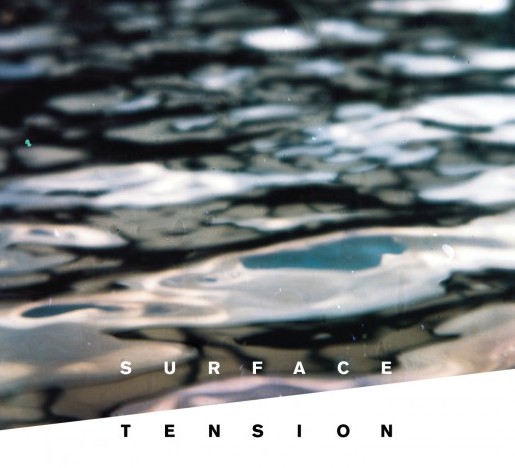Rob St. John has been contributing to Caught by the River, both on and off the web, for several years now. Whether he’s reviewing other peoples books, records or performances Rob can always be relied on to get to the heart of the art and present a review that is insightful, learned and poetic. How he finds the time to do any of this when he has so many of his own projects on the go, and cope with the sleep deprivation that comes with a new-born, is pretty awe-inspiring. If you haven’t paid much attention to Rob’s work, this is a good place to start. Give him your support, you will be rewarded.
In summer 2014, Ben Fenton, project manager of the ‘Fixing Broken Rivers’ campaign run by London freshwater conservation charity Thames 21, got in touch with Rob St John, a Lancastrian musician, artist and writer. Ben had an unusual commission in mind: could Rob design a project drawing from both art and science to creatively explore and document pollution along London’s River Lea?
Almost a year later, and the project – Surface Tension – is finished, resulting in an album of new music and field recordings taken along the Lea; a book of writing and photographs documenting the Lea Valley and the creative processes in Surface Tension; and an exhibition of film photographs from the project at Stour Space, Hackney Wick, London (E3 2PA) throughout April 2015.
In late summer, Rob walked most of the length of the Lea – one of Britain’s most polluted rivers – wearing holes into the soles of his shoes as he made field recordings with binaural microphones (which look like cheap headphones, but capture a 360 degree soundscape around your head), underwater hydrophones and contact mics. At the same time, he took film photographs on both a vintage 120 camera and a 35mm pinhole camera made from a Lesney toy matchbox (the Lesney factory was on the river at Hackney Wick).
Rob’s work has always had a foot in both art and science: working with sound, photography and natural processes in ways that are both experimental and accessible. In 2011 he released a critically acclaimed LP Weald; in 2013 the Water of Life collaboration with Tommy Perman; in 2014 the Bastard Mountain LP; and in 2015 Surface Tension and a sound installation ‘Concrete Antenna’ at Edinburgh Sculpture Workshop.
The name Surface Tension comes from the variety of different ‘surfaces’ in the Lea Valley: the polluted river surface overgrown with neon green weeds and gleaming with oil slicks, a thick boundary between states; the rusting and crumbling brick and metal surfaces on old buildings which hint at concealed histories and are increasingly overwritten by development, not least in the Olympic Park’s neat and sculpted landscape; and the layered, shape-shifting role of environmental sound in telling us about people, places and the environment.
Over the autumn and winter, the recordings and photographs were processed in ways designed to echo the water pollution of the Lea. Tape loops of field recordings and new music composed for the project (recorded with Pete Harvey (King Creosote, The Leg) in Scotland, with Pete also playing cello and piano) were soaked in tubs of polluted Lea river water – duckweed, decaying leaves, oil slicks and all – for a month. When replayed, the loops slowly disintegrated, the river etching new channels and tributaries onto the tape, which slowly peeled off and faded away. The negatives of the film photographs were given the same river water treatment, with their prints developing odd new microscopic marks, layers and flares.
Water pollution in the Lea provided more creative inspiration for Rob, through a technique known as sonification. Here, different pollution readings – for phosphates, bacteria, nitrates, ammonia and so on –can be mapped onto sonic parameters such as filters, reverb, delay and LFO to process an audio sample. Using pollution readings made by Thames 21 at seven points along the river, Rob created seven sonifications, each of which are odd, fizzing and twinkling reshapings of a piano line, ‘played’ (in a way) by the river.
Convolution reverb – where the sonic characteristics of a space are ‘mapped’ and applied to other recordings – was used extensively in the production of the album. Mapped from recordings in the historic Three Mills building at the lower end of the river – once the site of numerous water wheels – the convolution reverb technique provided another way of letting the river’s geography and architecture shape the record.
But, after all of this experimental tinkering, what has been produced is an album that is intricate, layered and accessible – shape-shifting between rolling guitar, piano and cello to submerged droning organ oscillations and saturated kosmiche synthesiser excursions.
This is no literal soundmap or linear accompaniment to the river, instead an album inspired by the tangled, always changing web of natural and urban environments in the Lea Valley; produced, deteriorated and disintegrated by various river-led production techniques; and interwoven with the results of many hours of diverse field recordings – bikes, boat propellers, football matches, photosynthesing pondweed, parakeets, scrapyards, African church choirs, parties on the marshes, Olympic ceremonies, trains, lock gates, dredgers – and the twinkling sonifications whirring up from the murk.
Surface Tension is released in April on limited edition CD, housed in a beautiful book of Rob’s photographs and writing, designed by Tommy Perman. Buy here
Surface Tension
surfacetension
Rob will be among the guests appearing on the Caught by the River stage at this summer’s Port Eliot Festival.
